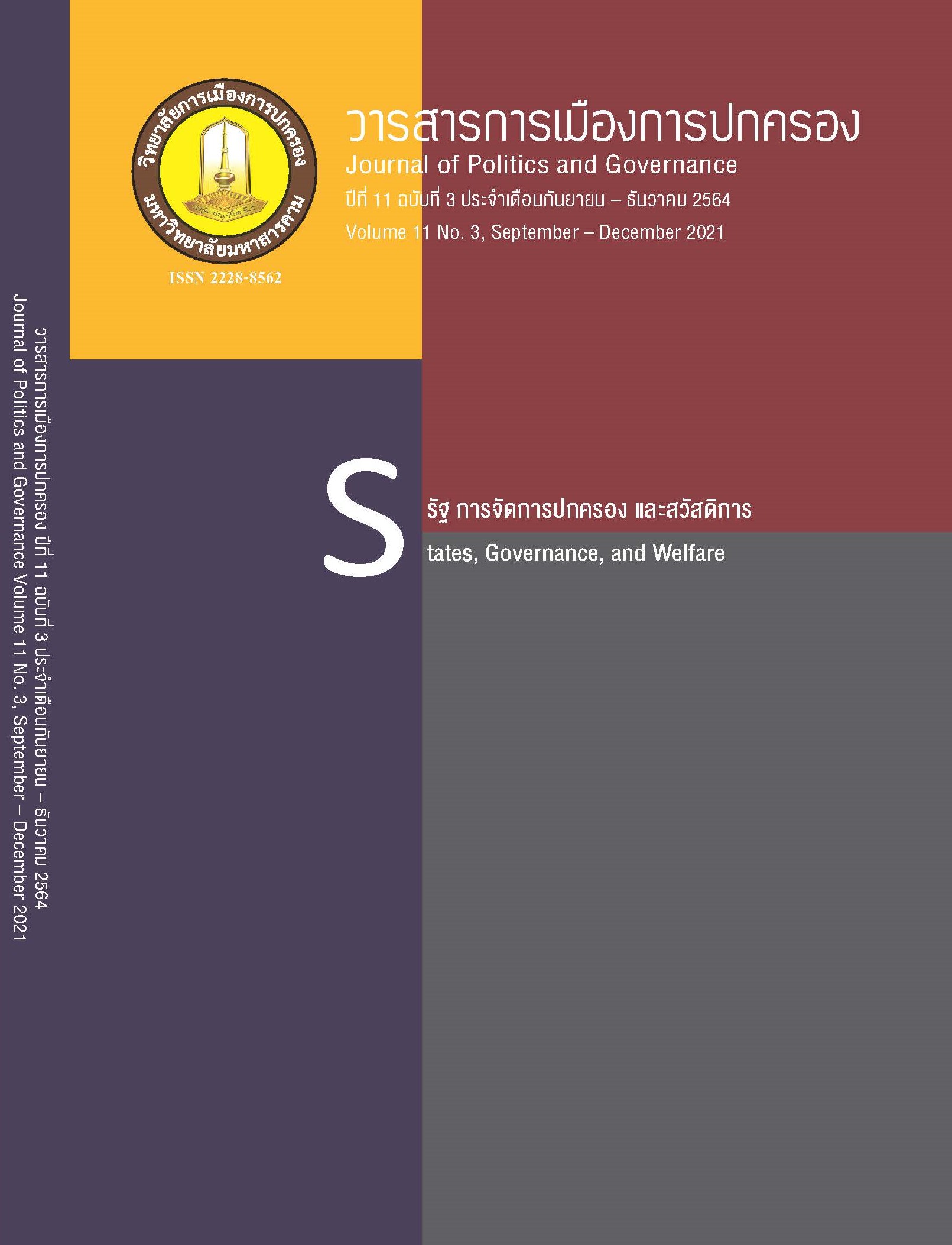Governance and Trans-Border Issues in Manipur Borderlands: Re-conceptualising India’s Myanmar Policy
Main Article Content
Abstract
In the contemporary global order, border areas have gone beyond the notion of being regarded simply as frontiers or boundaries and have become an indispensable part of a country’s foreign policy. Same applies to the border areas of India’s Northeast adjoining Myanmar covering a total distance of 1643 kilometres, without the exception of Manipur borderlands. India’s Myanmar policy within the renewed Act East policy emphasising on connectivity agenda, economic cooperation, infrastructure development, security issues and energy diplomacy, changed Manipur’s borderland into an inseparable variable because of the reciprocity inherent. However, the area, despite its geostrategic advantages, failed to develop. Rather, it is marked by juxtapositions. While it acts as transit to India - ASEAN connectivity, it has also got many porous cross border villages where sign of the state governance are dysfunctional. The proper governance mechanism is missing. Traditional practice of state-centric security still forms the basis of any policy related to the region. Ultimately, the big question is can India’s foreign policy moves synchronise with the dynamics of these border areas without compromising the externalities and reciprocities with Myanmar. The aim of the paper is to understand the prospects and missing links associated with the Manipur borderlands specifically in India’s Myanmar policy, and its implications for the policy makers and the stakeholders.
Article Details
References
Bahadur, M. (2018, September 17). Manipuri Diaspora in Myanmar: Past and Present - Part 1. Interactive Lecture Series, Centre for Manipur Studies, Manipur University. Retrieved from http://e-pao.net/epSubPageExtractor.asp?src=manipur. Ethnic_Races_ Manipur.Manipuri_Diaspora_in_Myanmar_Part_1_By_Mutua_Bahadur
Baruah, S. (2009). Beyond Counter Insurgency: Breaking the Impasse in Northeast India. New Delhi: OUP.
Baud, M, & Van Schendel, W. (1997). Toward a Comparative History of Borderlands. Journal of World Histor, 8 (2), Fall, 211-242.
Brunet-Jailley, E. (2007). Borderlands: Comparing Border Security in North America and Europe. Ontario: University of Ottawa Press.
Bose, P. R. (2018, November 12). At Moreh, Trade with Myanmar Borders on Informal. The Hindu Business Line. Retrieved from https://www.thehindubusinessline. com/news/at-moreh-trade-with-myanmar-borders-on-informal/article 25478894.ece
Chan ,Yuk Wah, and Womack, B. (2016). Not merely a border: borderland governance, development and transborder relations in Asia. Asian Anthropology, 15(2), 95-103.
Chan, Yuk Wah. (2013). Vietnamese-Chinese Relationships at the Borderlands: Trade, Tourism and Cultural Politics. London: Routledge.
Das, R. U. (2016). Enhancing India-Myanmar Border Trade Policy and Implementation Measures. New Delhi: Ministry of Commerce, Government of India.
Horstmann, A., Saxer, M., & Rippa, A. (2018). Routledge Handbook of Asian Borderlands.Milton Park and New York: Routledge.
India Today. (2018, July 7). Unrest in Manipur after Border Pillar Shifted 3 km into Indian Territory. Retrieved May 12, 2021, Retrieved from https://www.indiatoday.in/india/story/unrest-in-manipur-after-border-pillar-shifted-3-km-into-indian-territory-1279893-2018-07-07.
International Bureau of Education – UNESCO. (2021). Concept of Education. Retrieved March 16, 2021, Retrieved from http://www.ibe.unesco.org/en/geqaf/technical-notes/concept-governance
Keping, Yu. (2015). Essays on the Modernization of State Governance. Beijing: Social Science Academic Press.
Khundrakpam, P. (2016). Experiences of Manipur and Indo-Myanmar Border Trade: A Relook. New Delhi: Akansha Publishing House.
Kipgen, N. (2019). Why Are Farmers in Manipur Cultivating Poppy?. Economic and Political Weekly, 54 (46), November. Retrieved from https://www.epw.in/engage/article/why-are-farmers-manipur-cultivating-poppy#:~:text=Poppy%20is%20reportedly%20being%20cultivated,6%2C000%20acres%20in%202017%E2%80%9318
Minghi, J.V. (1963). Boundary Studies in Political Geography. Annals of the Association of American Geographers , 53 (3), 407-428.
Ministry of Foreign Affairs of Finland. (2011). Cross-Border Cooperation – Benefiting from Borders. Retrieved from https://www.aebr.eu/files/publications/CBC_Benefiting_from_Borders.pdf
NE Now News. (2020, November 20). More Chinese Arms Reach Northeast India. Retrieved from https://nenow.in/north-east-news/assam/more-chinese-arms-reach-northeast-india.html
Nwe Ni Hlaing. (2015). The Meitei (Kathe) Crown Service Groups in Myanmar from the Earliest Times to the End of Monarchical Rule. Journal of the Myanmar Academy of Science and Arts, 13 (9), June, 65-86.
Phanjoubam, P. (2018). The Northeast Questions: Conflicts and Frontiers. New Delhi: Routledge.


